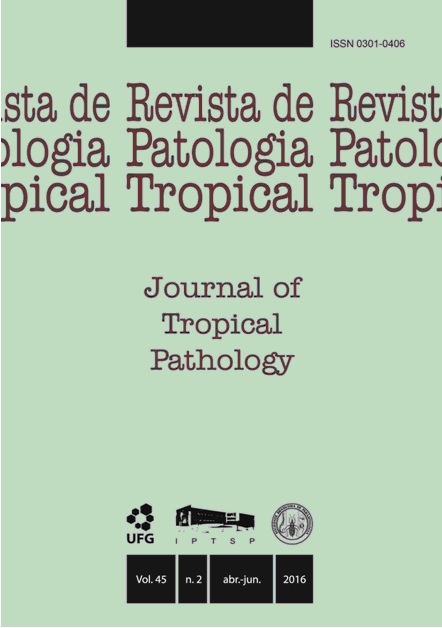DIVERSITY, PREVALENCE AND NATURAL INFECTION OF TRIATOMINES (HEMIPTERA: REDUVIIDAE) BY TRYPANOSOMATIDS IN THE REGIONS OF CURIMATAÚ AND SERIDÓ IN PARAÍBA, BRAZIL
DOI:
https://doi.org/10.5216/rpt.v45i2.41778Keywords:
Triatominae, vector ecology, epidemiological surveillance, Chagas disease.Abstract
Triatomine insects (Hemiptera: Reduviidae) are blood-sucking vectors of Trypanosoma cruzi, the etiological agent of Human Chagas Disease. This study aimed to evaluate triatomine fauna caught in the municipalities of Curimataú and Seridó in Paraíba during the Control Program for Chagas Disease Campaign (PCDCh) in 2013, and perform a retrospective survey of the species captured between 2008 and 2012 in the same region. Taxonomic identification and parasitological analysis of the feces of the insects caught in the field in 2013 was performed. Files held in the 4th Regional Health Management Center of tests conducted in triatomines during PCDCh in the years 2008 to 2012 were also studied. We analyzed the following entomological indicators: Colonization Index (CI); Domiciliary Infestation (DI), Domiciliary Triatomine Density (DTD) and Infection Index (II). During the study period (2008-2012) 1,896 triatomine specimens were captured in the region, revealing the presence of seven species of insects, as follows: Panstrongylus lutzi, P. megistus, Rhodnius nasutus, R. neglectus, Triatoma brasiliensis, T. melanocephala and T. pseudomaculata. The geographic distribution of triatomines in the towns studied was evidenced as well as their annual prevalence during the years of the study. Significant associations were noted (p <0,05) between the development stage and place of capture, for T. brasiliensis and T. pseudomaculata, intradomicile and peridomicile, respectively. In 2013 the following indices were noted: CI 41.6%, DI 13%, DTD 0.3% and II 0.7% and the index was 0.1% for specimens examined between 2008 and 2012. The entomological indices show intra and peridomiciliary vector colonization and suggest that the parasite cycle remains active in the region.
Downloads
Downloads
Published
How to Cite
Issue
Section
License
The manuscript submission must be accompanied by a letter signed by all authors stating the full name and email address, confirming that the material has not been published or is under consideration for publication elsewhere, and agreeing to transfer copyright in all media and formats for Journal of Tropical Pathology. The authors will not be paid for published articles. They are solely responsible for the content of those articles, even if the Editor holds the right to adjust them to the norms of the journal.
The reviewers will not be paid for the peer review process.

